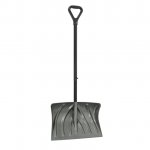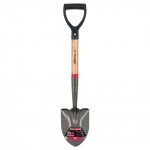A lot of my lightweight technical big game layers cross over really well for late season roosters. Zip off merino wool base layers. Goretex windstopper vest or jacket (sitka). I hate bulky clothing and really try to avoid heavy boots, bibs, parkas. And there's nothing worse than working up a sweat walking out to the end of a shelterbelt only to stand there in the wind for 30 minutes as a blocker if you don't have quality clothing on to manage perspiration and wind.
You are using an out of date browser. It may not display this or other websites correctly.
You should upgrade or use an alternative browser.
You should upgrade or use an alternative browser.
Gear Recommendations - Mid-December First Timer
- Thread starter Ridlejs
- Start date
gim
Well-known member
I wouldn't say you need to buy a second set of boots. Bring the ones you have. Feet rarely get cold when you're walking around. Using the appropriate pair of socks is a must though. No cotton whatsoever. It soaks up moisture like a sponge.
Boot dryers are a good idea. I use my boot dryers nearly every time I'm done hunting.
Forget the neoprense vest. Terrible idea.
If there's measureable snow on the ground, the bottom of your pants should be a waterproof material. That would eliminate jeans or chaps that soak up moisture.
Boot dryers are a good idea. I use my boot dryers nearly every time I'm done hunting.
Forget the neoprense vest. Terrible idea.
If there's measureable snow on the ground, the bottom of your pants should be a waterproof material. That would eliminate jeans or chaps that soak up moisture.
Bob Peters
Well-known member
I'm bringing 3 pairs of boots on most trips. Two leather and a pair of neoprene. I prefer leather boots but wear neoprene when I have to.
Rent a U-Haul trailer for all the extra gear listed in above postsI'm bringing 3 pairs of boots on most trips. Two leather and a pair of neoprene. I prefer leather boots but wear neoprene when I have to.
Limitless
Well-known member
If snow is a possibility, I bring a snow shovel and pointed tip shovel in case I get hung up on a country road/section road. Packed snow can be almost impossible to break up sometimes with a snow shovel, hence the pointed shovel.
Examples of what I am talking about, below. You can get them at most hardware stores. If you don't already have them, you can get them during the trip, if there turns out to be snow.
When everything is white, drifts can be difficult to see until you are on top of them. Of course, you can back out/turn around if you don't want to risk it. I often choose to take the risk when trying to get to spots others might avoid, hence preparing for getting stuck.


Examples of what I am talking about, below. You can get them at most hardware stores. If you don't already have them, you can get them during the trip, if there turns out to be snow.
When everything is white, drifts can be difficult to see until you are on top of them. Of course, you can back out/turn around if you don't want to risk it. I often choose to take the risk when trying to get to spots others might avoid, hence preparing for getting stuck.


Miforester
Well-known member
Not much I can add to the list and I didn't read everything but if it hasnt been mentioned tow/jerk strap, and clevis. I have added traction mats as well. I would also add a sleeping bag as one mentioned might have to stay in your rig at night, coffee can with sand and a candle is also good. Clothing from cool to extreme cold, face and neck coverings as well as good gloves.
Bob Peters
Well-known member
I'm thinking just flip flops and t- shirts next time. Minimalist approach.Rent a U-Haul trailer for all the extra gear listed in above posts
A5 Sweet 16
Well-known member
For me, clothes, hats, & boots are the easy parts. Gloves are where it's at. I have 3 types that could all see use in December. Light, medium, & heavy. Make sure you can shoot a shotgun with any of them. And consider some hand warmers, just the cheap, open them, shake them up, & they magically get warm kind. One placed inside your glove isn't as uncomfortable as you might think, & if it keeps your fingers a little less numb, that's a good thing. And Musher's Secret for the pup's paws, arm pits, chest, tummy, & nads (if that's an issue).
UplandHntr
Well-known member
I typically put on a silk liner first before any type of sock. But Ive been wearing merino lately and am a believer.
Wind River
Well-known member
Musher’s Secret is a secret leather conditioner also, glove or boot leather. I like Smartwool sock liner.
TomU
Well-known member
I have Raynaud's which makes my hands really susceptible to cold. I've tried different gloves and hand warmers but didn't find anything that worked well for me. I finally tried a pair of electric gloves last winter and used them hunting in the mountains in Utah. When the temps were in the high teens/low twenties they didn't keep my hands warm and toasty but more like "cool" instead of cold, and there was no problem with flexibility and trigger access.
All in all, they helped.
All in all, they helped.
I wouldn't say you need to buy a second set of boots. Bring the ones you have. Feet rarely get cold when you're walking around. Using the appropriate pair of socks is a must though. No cotton whatsoever. It soaks up moisture like a sponge.
Boot dryers are a good idea. I use my boot dryers nearly every time I'm done hunting.
Forget the neoprense vest. Terrible idea.
If there's measureable snow on the ground, the bottom of your pants should be a waterproof material. That would eliminate jeans or chaps that soak up moisture.
This; my danners are not waterproof anymore but switching socks out is all I do throughout the day. I plan on upgrading to some non-insulated Schnees after this season
neoprene vest seem to cause more issues than worthwhile, chaffing being the biggest issue around the armpits
A5 Sweet 16
Well-known member
You never know what conditions will be like. Brush pants & long Johns get me through all my hunting. They might get wet, but you stay warm, & they dry overnight.Do yall recommend brush pants, gaiters, or chaps?
Wind River
Well-known member
If I can get them on y’allDo yall recommend brush pants, gaiters, or chaps?
Limitless
Well-known member
I am similar in this regard. I wear shorts under my brush pants when it is warmer and denim jeans under my brush pants when winter hits. When staying in a motel, I put them on top of the vents of the heating system with my socks and put boot dryers in my boots (get wet from sweat).You never know what conditions will be like. Brush pants & long Johns get me through all my hunting. They might get wet, but you stay warm, & they dry overnight.
My jeans are worn inside my muck boots and the brush pants over the top. Walking in water or wet snow will sometimes soak through the pants (you can wash them in waterproofing stuff, which I do every so often), but since I am moving, I don't get cold. I am more warm blooded than most, and I also hate having my upper body sweating, so I wear less than most on my upper body.
If there is a windchill below zero Fahrenheit, ear muffs or a headband that is larger over the ears (and they make them with pocks for the disposable hand warmers too) can protect your ears. I am always wearing a baseball cap style hat, since my camera mounts to it. If you are comfortable in a knit/stocking cap, that goes over your ears, that's another option. Cheeks might still get cold.
I am guessing, most people coming from warmer climates will want to wear a little more clothing than people who live in cold climates, if for no other reason than they don't have time to acclimate. Regardless, I'd still recommend trying to adjust your dress (layers) during the hunt so that you don't get too sweaty. Sweat and cold temps aren't a good combo.
I wear a short sleeve t-shirt, until it gets to below about 20 deg, and then I add a long sleeve zipper hoody. There can be some temps in the in between zone where I will start with the hoody on, possibly zipped up, then unzip it, then take it off and put it in the back of my vest. Someone coming from a warmer climate would generally need more than this, but the idea is you will get warmer as you hunt and/or as the temp increases during the day. Being able to layer up or down is important.
Same with gloves. I wear mittens that have lightly gloved fingers that can come out of the mitten tips. I may start with just a trigger finger out, then more fingers out, then taking off the mittens entirely. Sometimes the temps are just right where I have to put them back on, then off, then on, etc.
For me, a lot of it depends on the cover I am hunting and how much snow is on the ground. If I am walking on less than a few inches of snow, in field grasses, that's a big difference between 2 feet of snow in thick cattails. In the latter, I am generating a ton of heat due to all the exertion.
I also recommend bringing some powerbar/protein bar type things for an emergency, in the field, in case you start running low on energy and your core temp starts dropping (hypothermia) and keeping hydrated. Honey is also an easy thing to carry (squeeze bottle) that is a dense source of carbs for an energy boost and a way to raise blood sugar, allegedly, a little slower than other types of sugar.
I can't remember if you said what type of dog you have, @Ridlejs ? Most labs are good to lower temps that most people want to hunt. If you have a breed with less fur, and slimmer build, a waterproof fleece vest can help. It is easy for dogs to overheat, so you don't want to do this unless you are getting to a temp below the dog's comfort level (which is different for every dog). Unless you are hunting with a Chihuahua, I wouldn't put something warm on them below 30 deg F. My dog doesn't have a thick coat, and I put the fleece on her when it gets below 20 deg F. Sometimes between 20 F and 30 F, if she is going to get wet. I never used to put anything on my lab. And my newfoundland loved to be out in -20 F actual temps.
